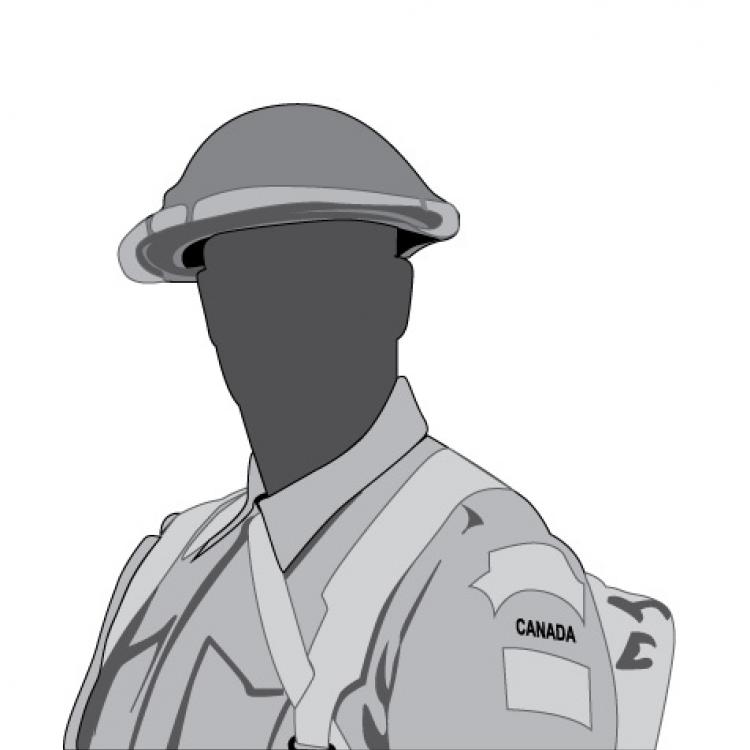ANDERSON, Robert
Biographical Summary
SERVICE NO: 126506
DIVISIONAL UNIT: 1st Canadian Infantry Division 1st Brigade 4th Battalion - Central Ontario Canadian Infantry Corps
DATE OF BIRTH: March 5, 1880 in Ayr - Ayrshire - Scotland
DATE OF DEATH: October 8, 1916 36 years 7 months
FATHER: Mr. Robert Anderson - Ayr - Ayrshire - Scotland
SISTER: Miss Mary Anderson - Stanwix - Newlands - Glasgow Scotland Baggesensga - de - Copenhagen - Denmark. Personal: Height 5' 8", Weight 150 pounds, Complexion was fair, Eyes were brown and hair was brown.
Religion: Roman Catholic.
Robert was raised in Scotland and received all his education there. As a young man he served three years with the King's Own Scottish Borderers Regiment. In 1905, at the age of 25, he immigrated to Canada and found his way to Huron County. He was employed as a horseman and farmer with the Carbutt family of Hullett Township prior to his enlistment.
For the next 8 weeks following his enlistment he trained in Canada. Then in the middle of November he embarked from Canada and arrived in England on November 30, 1915. For the next five months he continued with his training before transferring to the 4th Battalion on May 1st. Private Anderson then went overseas into France and was assigned to Canadian "B" Reinforcement Depot on May 2nd. Three weeks later he joined his unit in the field.
On October 7th, while the Battalion was located at the Tara Valley, each man was issued 120 rounds + 50 extra rounds of small arms ammunition, 4 Mills bombs, 3 sandbags along with 2 days of food rations. Each Company has 12 bombs in sandbags, 3 Very Pistols, 48 while Very Pistol lights, 12 green Very Pistol lights, 12 red Very Pistol lights for "A & B" Companies, 2 sets SOS rockets and 9 red ground flares for signalling aircraft.
The Battalion then left their position at 6:30 pm and proceeded to relieve the 1st Battalion and the relief was completed by midnight of October 7/8. In the morning the Battalion was in the Assembly trenches in front of Courcelette. The two assembly trenches were 75 yards apart and ran due east from the Dyke Road. "A & B" Companies were in the forward trench with "C & D" Companies in the back trench. Each Company had a squad of bombers and 2 Lewis guns. At 4:50 am the Battalion began their advance behind a creeping barrage. As they came to Dyke Road the wire to the right of their objective had not been cut and was intact. They advanced to the left and entered the enemy trenches on the front of the 3rd Battalion. When daylight came, they realized their position and a bombing party was sent 300 yards down the enemy trench to Dyck Road and were able to take 100 prisoners. They now realized there was much uncut wire between the enemy trenches and now decided not to attack the enemy because of the wire and open ground. In addition, had they attacked they would not have had a reserve of ammunition or bombs. The Battalion was now between Dyck Road and the enemy trenches and blocks were set up and they reorganized with "A" Company on the right. Enemy bombers had been making small counter attacks during the morning and at 1:45 pm the enemy brought down a very heavy artillery fire onto the Battalion followed by the advance of strong enemy bombing parties down Below and Fallwitz trenches. The enemy was successful in driving a wedge between the 3rd & 4th Battalions. The 3rd Battalion along with the infantry of the 4th Battalion retired down Regina Trench to the Dyck Road. The remainder of the 4th Battalion wanted to advance with bayonets but could not hold the left front. The members of the Battalion on the right tried to counter-attack but ran out of bombs and were forced to fall back. What was left of the Battalion then fell back to the original assembly trenches.
Private Anderson was last seen in the trenches during the afternoon of October 8th and he was trying to rally the men around him for a bayonet charge against the enemy at Regina Trench. It was during this period when Private Anderson was killed in action performing his duties.


